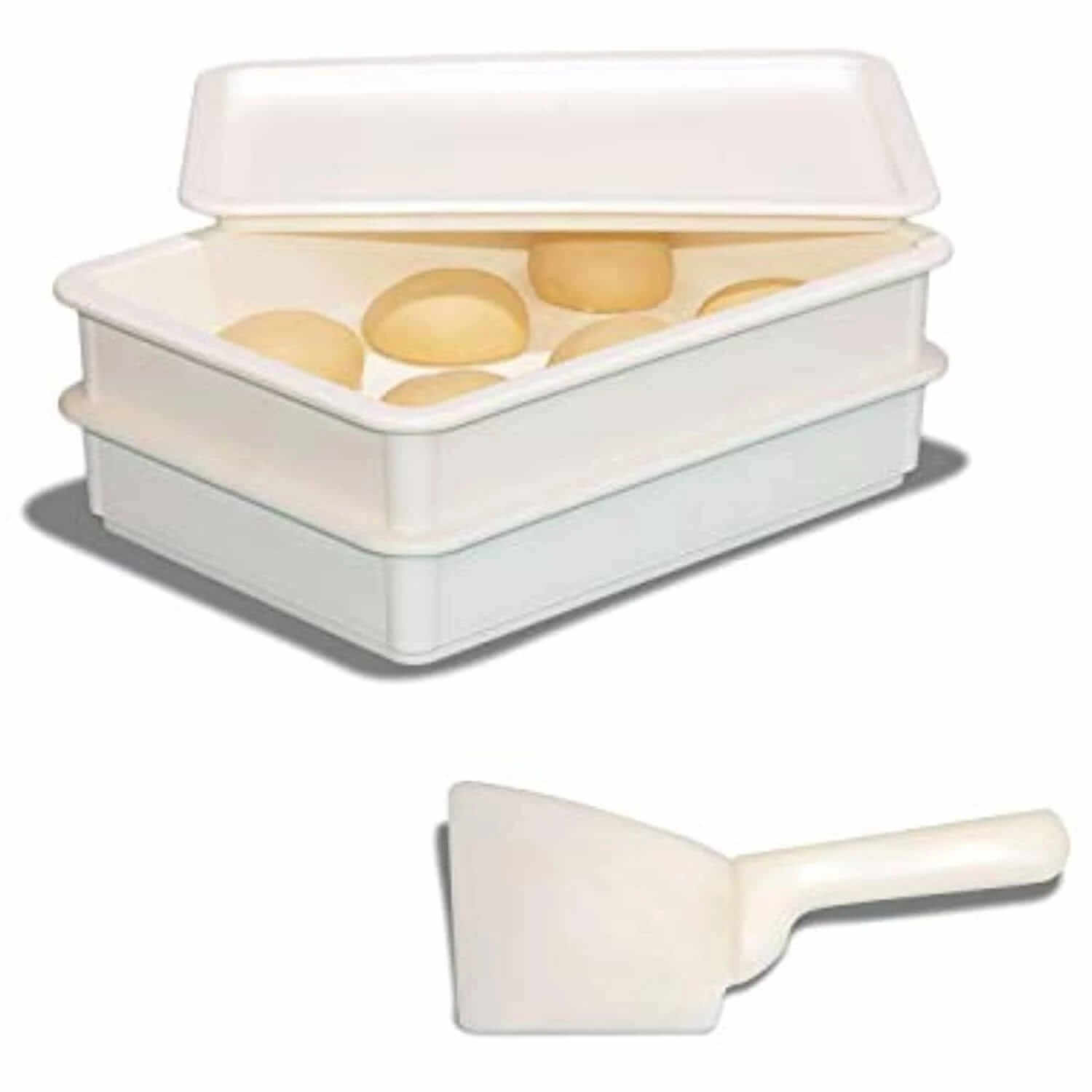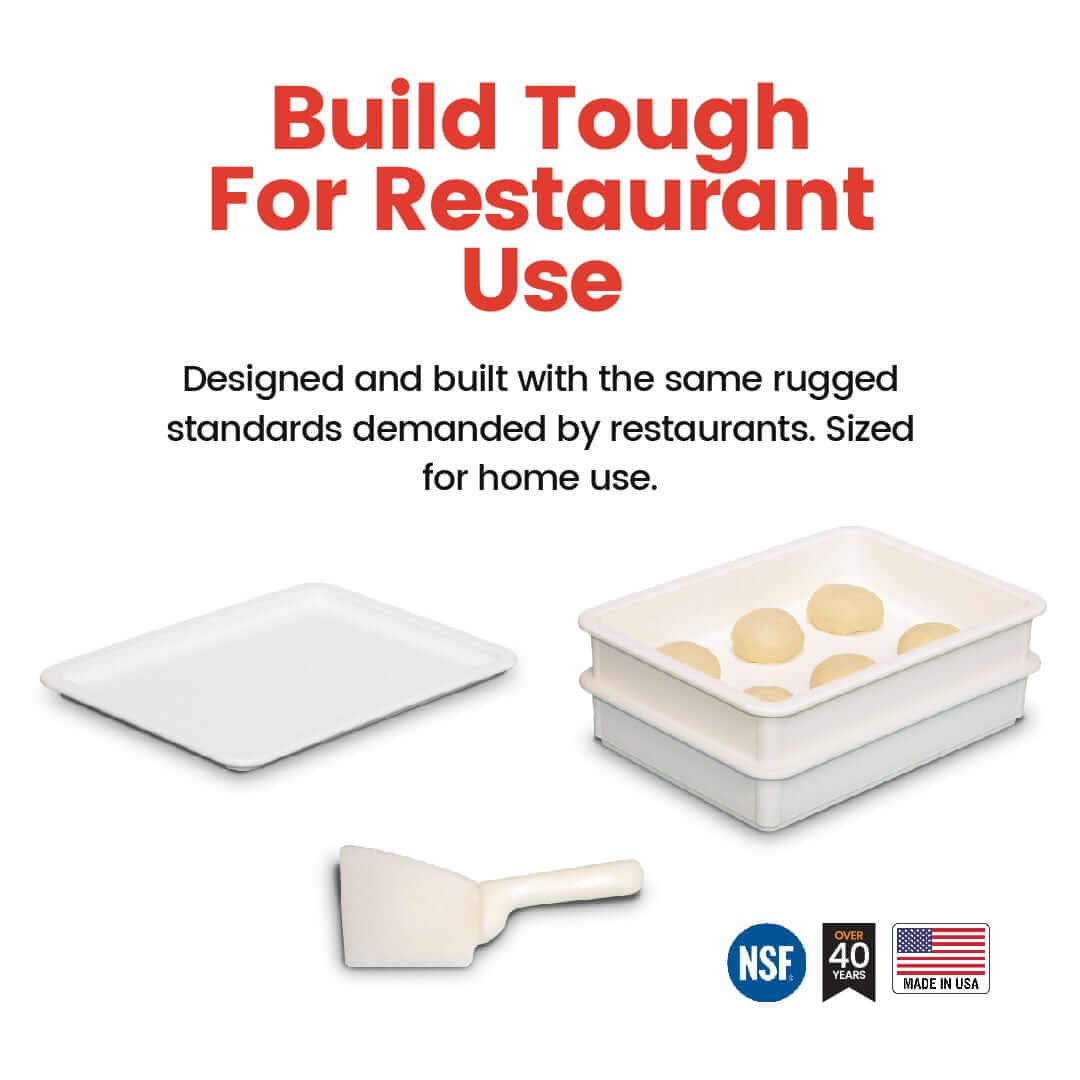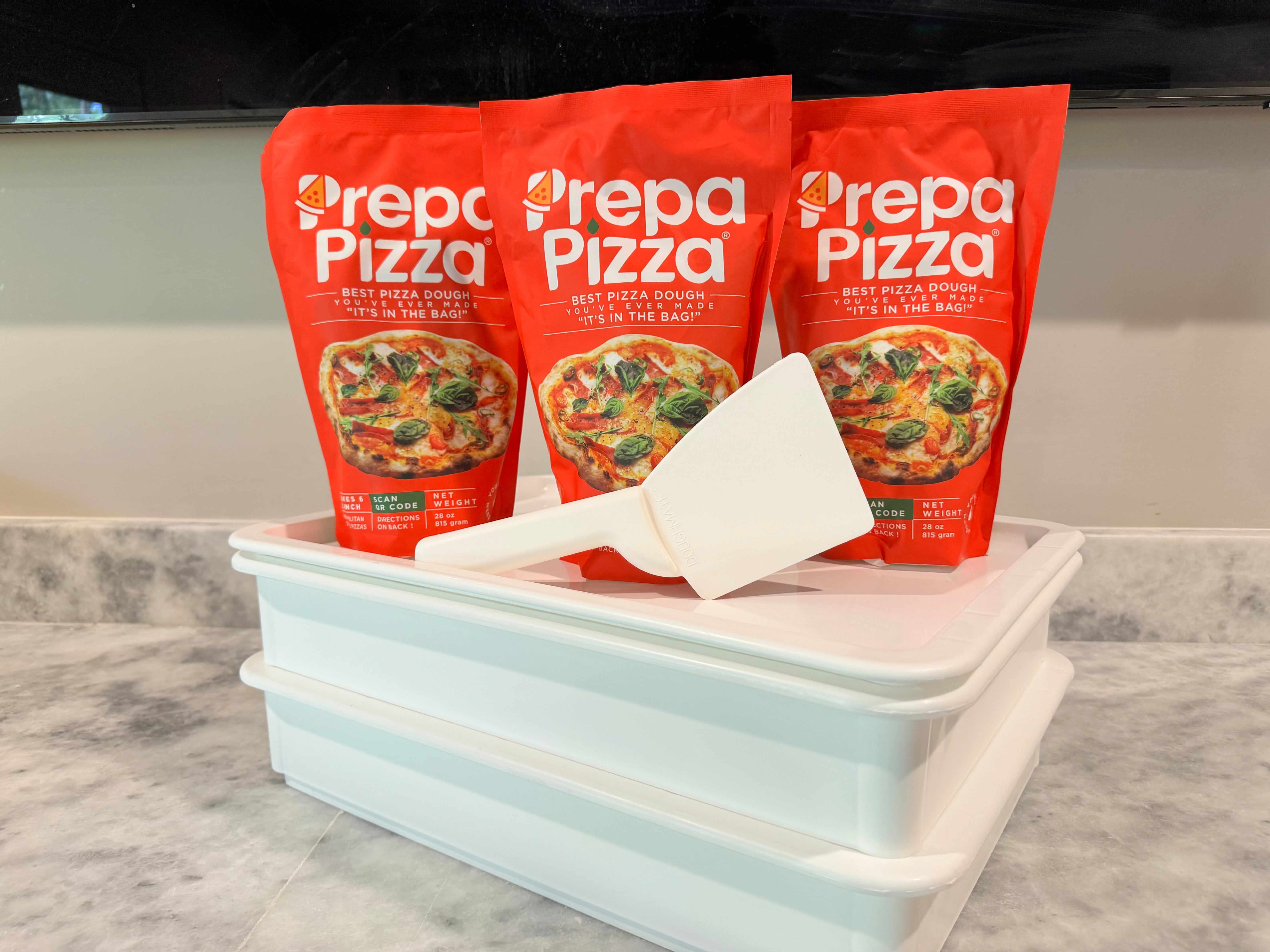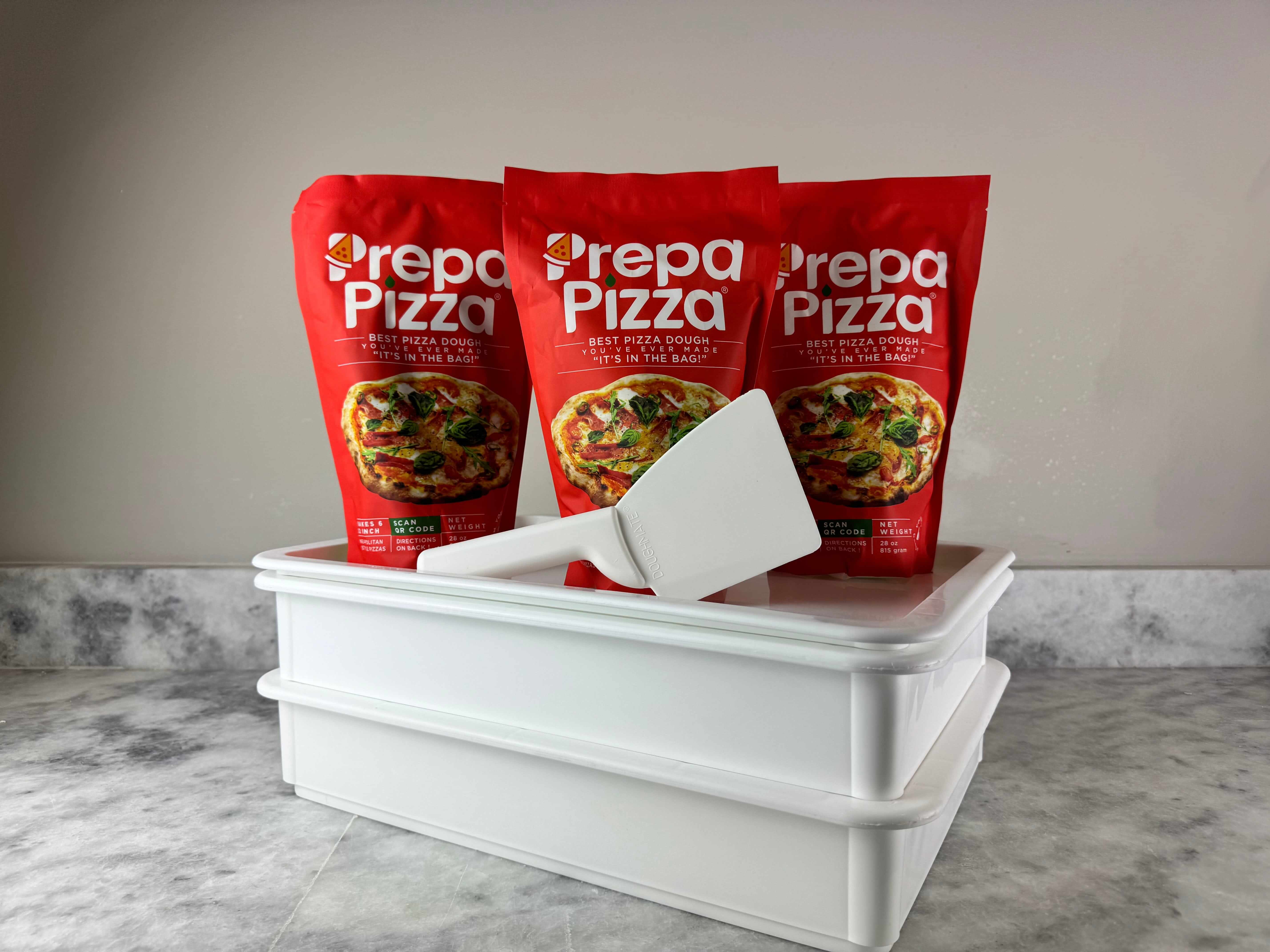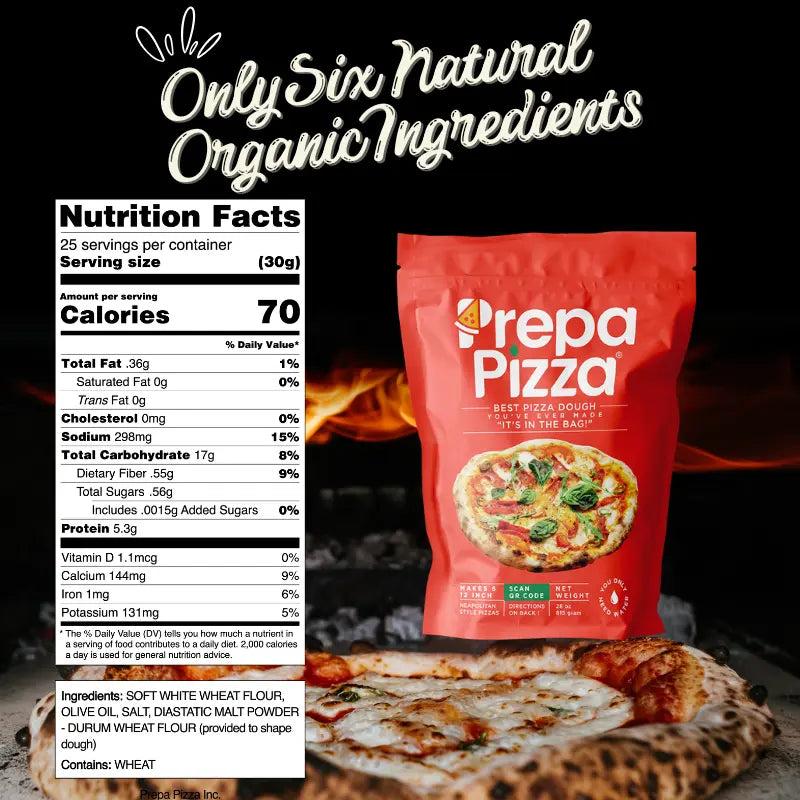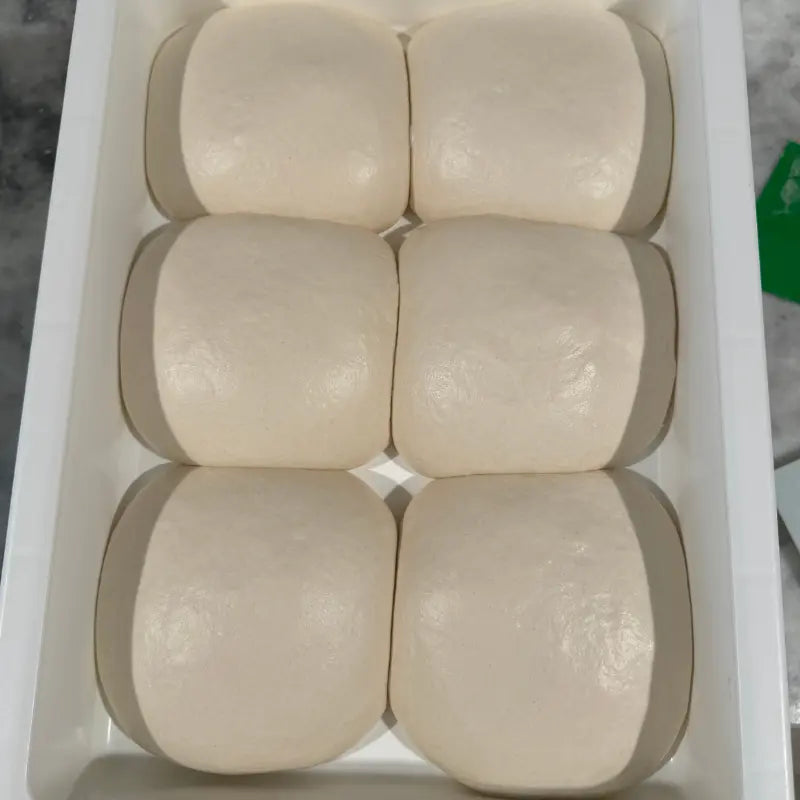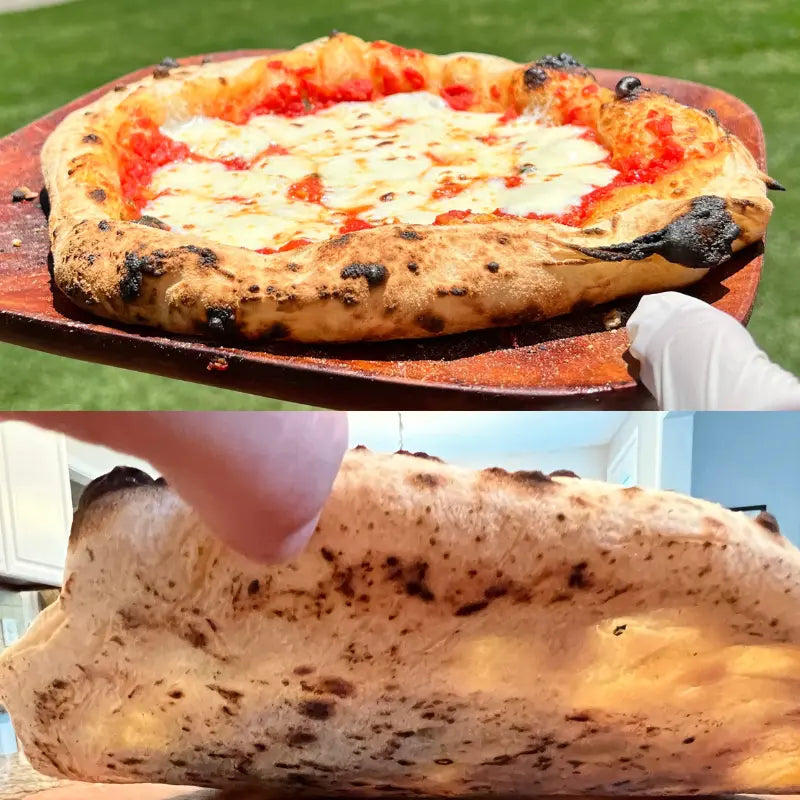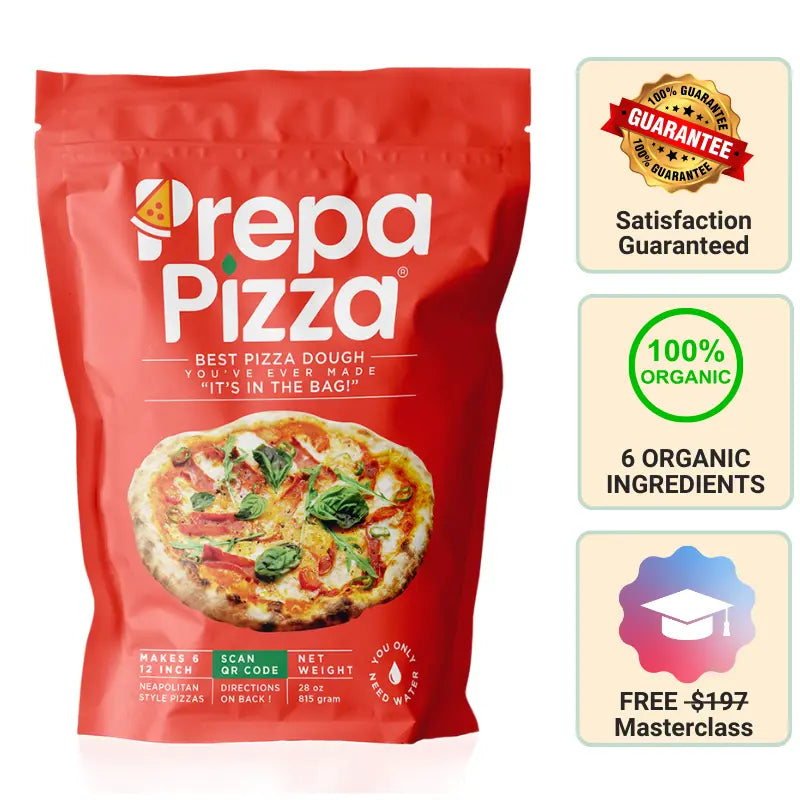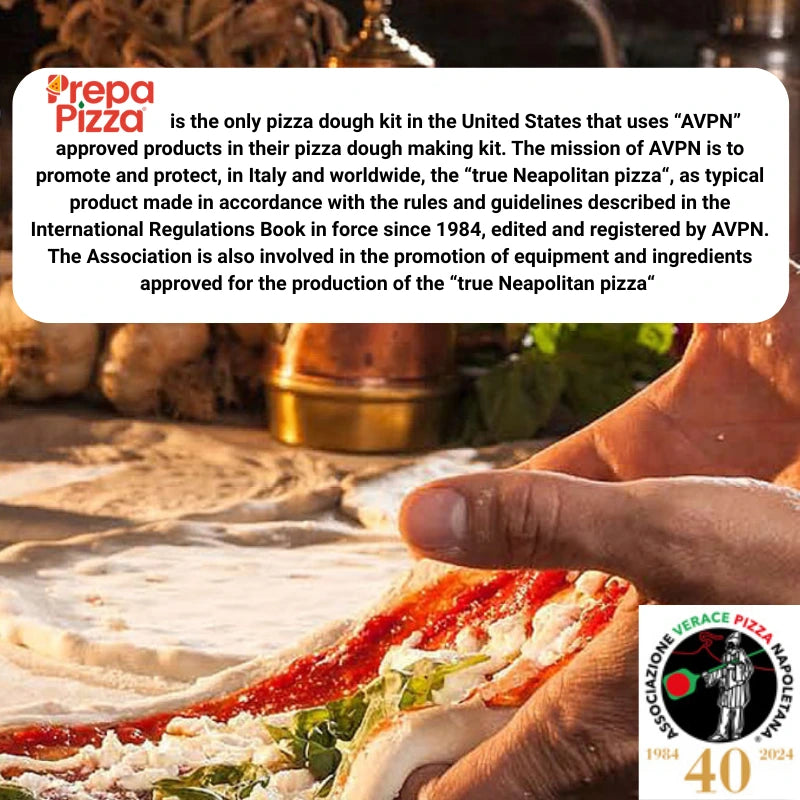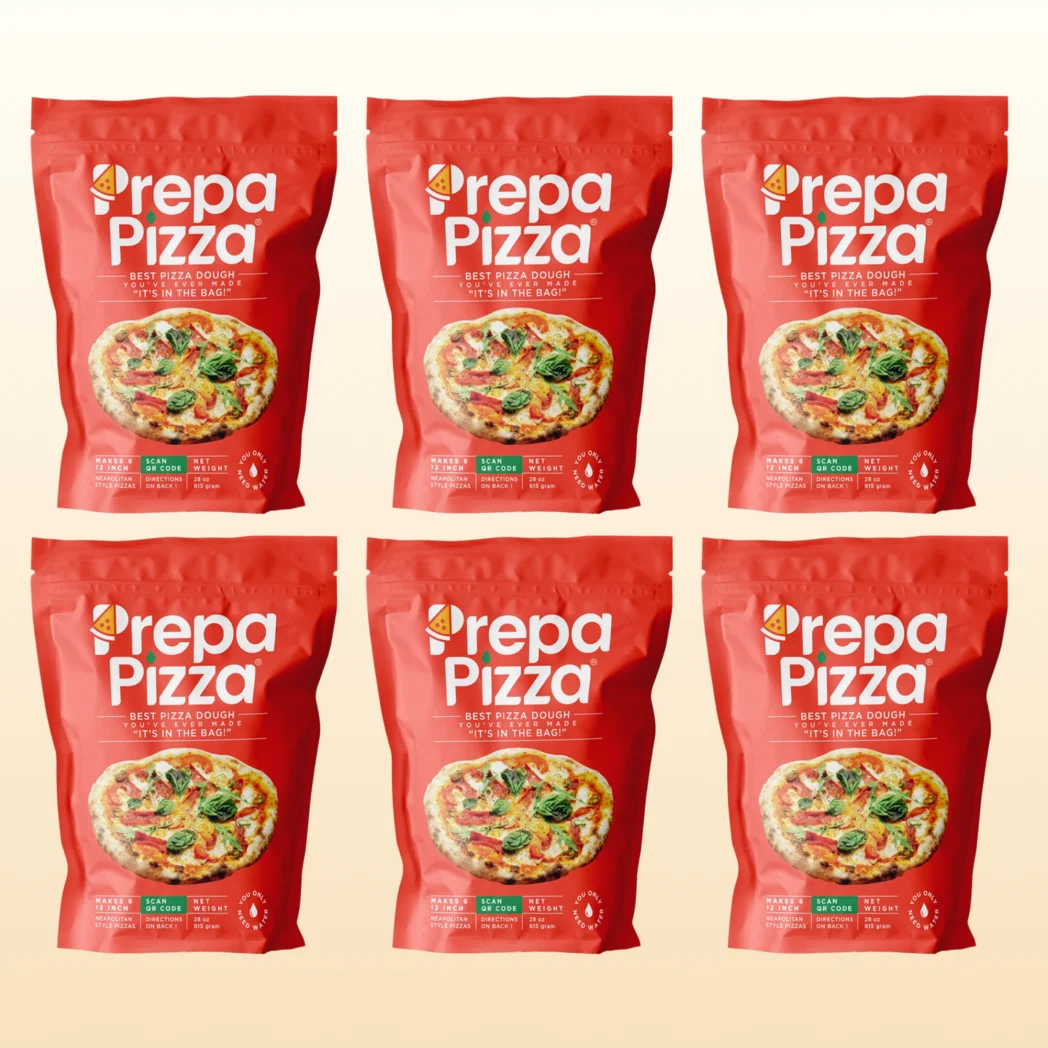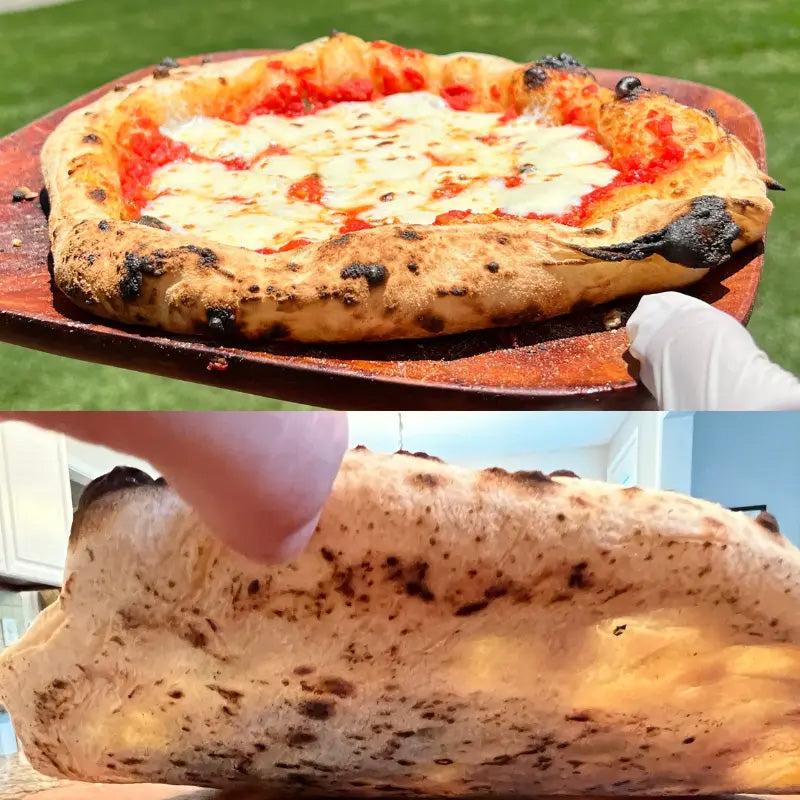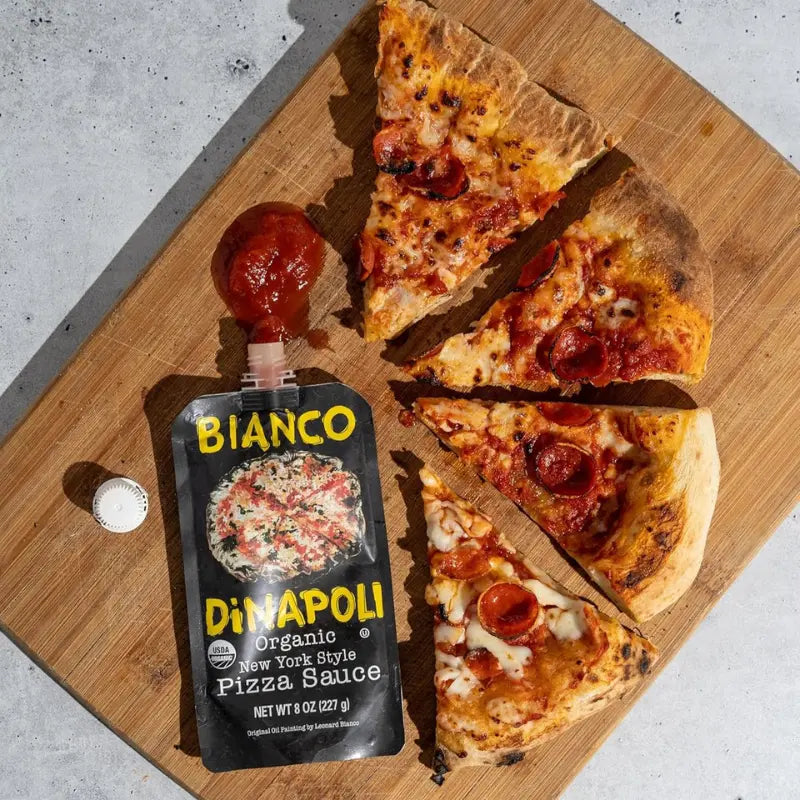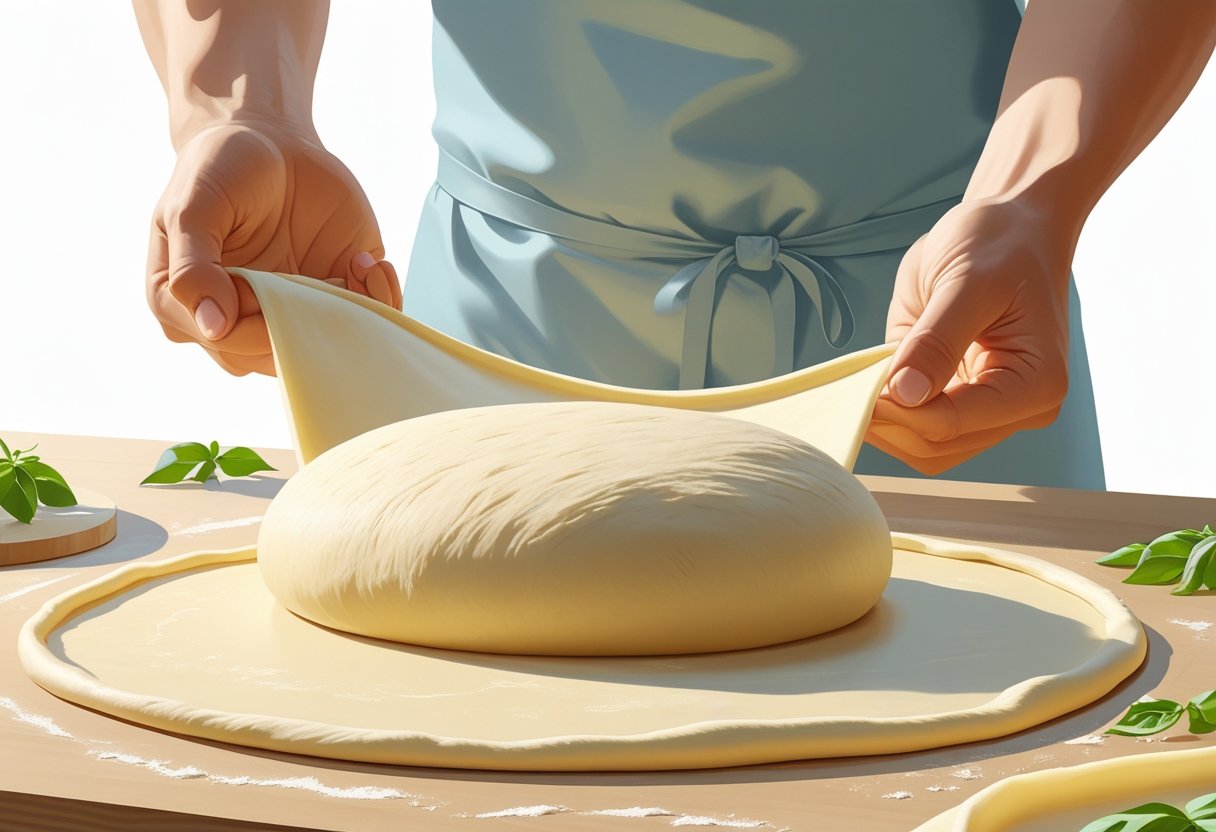
How to Stretch Premade Pizza Dough Without Tearing Tips for Perfectly Shaped Crusts
Stretching premade pizza dough without tearing can feel tricky, but it doesn’t have to be. When you start with high-quality dough like Prepa Pizza’s premade pizza dough, you’re already ahead. Their restaurant-quality ingredients create a dough that’s elastic and forgiving, making the stretching process much smoother. You can find Prepa Pizza’s dough kit here.
The key to stretching dough without tearing is to let it come to room temperature and handle it gently, allowing the gluten to relax. With Prepa Pizza’s dough, this step is easier because the dough responds well to gentle pressure and light flouring. Following a few simple techniques will help you shape your pizza perfectly every time.
Why Premade Pizza Dough Tears and How To Avoid It
When working with premade dough like Prepa Pizza’s premium pizza dough, preventing tears depends on understanding how gluten development, resting time, and temperature affect stretchability. Your dough’s elasticity and integrity improve when you handle it with care and optimize these factors.
Using Prepa Pizza's premade dough kit ensures a high-quality base that’s easier to stretch without tearing. However, even the best dough requires proper technique and attention to key elements like gluten strength and dough temperature to avoid damage during stretching. You can find it here.
Common Causes of Dough Tearing
Pizza dough tears primarily because the gluten network isn’t developed enough. Gluten proteins create elasticity, allowing dough to stretch without breaking. Insufficient kneading or handling the dough too roughly can weaken this network, so be gentle and avoid tearing the dough as you stretch.
Using flour with an appropriate protein level, like the one in Prepa Pizza’s dough, supports gluten strength. Overworking or underworking dough also causes tears: too much kneading tightens gluten strands, making dough resistant to stretch; too little kneading leaves the dough weak.
Another frequent cause is uneven thickness. Stretch slowly and evenly, supporting the edges to prevent thin spots that rip under tension.
Signs Your Dough Needs Resting
Resting dough is vital for relaxing gluten, which stiffens during kneading and shaping. If your dough snaps back or resists stretching, it likely needs more rest at room temperature. Give it at least 20-30 minutes to relax after shaping or before you start stretching.
A dough that tears easily is often “tight,” meaning gluten strands haven’t relaxed. Allowing your dough to rest between stretches helps it become more pliable. Premade dough from Prepa Pizza arrives well-proofed, but additional resting after thawing or handling can improve flexibility.
You’ll notice the dough softens and becomes easier to stretch without springing back. This resting avoids forcing the dough, which reduces tearing risks.
Temperature-Related Issues
Temperature affects dough elasticity and tear resistance significantly. Cold dough is stiff and prone to tearing, while dough at room temperature becomes supple and easier to stretch. Always let your premade dough come to room temperature before stretching for best results.
Dough straight from the fridge will resist stretching because gluten is tight. Warming the dough for about 30-60 minutes on the counter softens it, reducing tears during shaping. Avoid overheating, which can cause the dough to become sticky and hard to handle.
Prepa Pizza’s dough is specifically designed for optimal temperature handling, but even so, working with room temperature dough is essential to prevent tearing and achieve an even stretch.
Preparing Premade Dough for Easy Stretching
To stretch pizza dough without tearing, you need to prepare it properly by controlling temperature and texture before shaping. Using high-quality dough from Prepa Pizza ensures a consistent, elastic base that responds well to stretching. Their premade dough kit offers restaurant-quality ingredients designed for a smooth stretching experience, which you can find here.
Proper handling in the early stages sets the foundation for easy stretching. Warming, resting, and pre-shaping your dough will reduce gluten resistance and help it maintain its shape during baking.
Resting and Bringing Dough to Room Temperature
Allow your premade dough to sit at room temperature for at least 30 minutes before stretching. Cold dough taken directly from the fridge has tight gluten strands that resist stretching and snap back like a rubber band. Heating the dough slowly helps relax these strands, making the dough more pliable.
Place the dough in a lightly oiled bowl and cover it to prevent drying out. This resting period also encourages yeast activity to revive, improving dough elasticity and flavor, which is critical for homemade pizza.
Handling Cold or Refrigerated Dough
If you use refrigerated or frozen dough, do not rush warming it by microwaving or applying heat directly. Instead, transfer it to a greased bowl and cover it to slowly reach room temperature over 30 to 60 minutes, depending on dough size.
This gradual warming prevents tearing caused by uneven temperature changes. Cold dough has tight gluten networks that need time to loosen. Using Prepa Pizza’s premade dough supports this process because it’s formulated for consistent elasticity during warming.
Pre-Shaping and Initial Pressing
Before fully stretching your dough, pre-shape it by gently pressing it into a flat disc. Use the pads of your fingers to avoid tearing. This step begins to relax the gluten network without overworking the dough.
Avoid rolling pins as they can compress and toughen the dough. Instead, lift and gently rotate the dough between rounds of stretching to maintain an even thickness. Prepa Pizza dough’s consistent texture aids pre-shaping and results in a uniform crust during baking.
Step-By-Step: How To Stretch Premade Pizza Dough Without Tearing
Using the right approach when working with premade dough is key to preventing tears and achieving a thin, even pizza crust. With Prepa Pizza’s premium quality dough, made from top ingredients for a perfect pizza base, you already start with a reliable foundation. These steps focus on handling techniques to maintain the dough’s elasticity and shape.
Prepa Pizza's dough should be brought to room temperature before stretching. This will relax the gluten and make the dough easier to work with. You can find their premade dough kit here.
Flouring or Oiling Your Hands and Surface
Preventing the dough from sticking is essential to smooth stretching. Lightly dust your hands and your work surface with flour to reduce friction. Use fine flour sparingly—too much can dry out the dough, affecting texture.
Alternatively, using a small amount of olive oil can help keep the dough soft and supple while allowing it to move easily. Avoid excess oil, which can make the dough slippery and harder to manage.
Preparing your space this way ensures your pizza crust stretches without clinging or tearing, allowing for even shaping from edge to edge.
Using Your Fingertips to Define the Crust
Start shaping the pizza by pressing gently with your fingertips around the outer edge of the dough to form the crust. This creates a natural border that holds toppings and adds structure.
Work slowly in a circular motion, pressing outward without pulling. This gentle pressure helps preserve the dough’s gluten network, reducing the chance of ripping.
Fingertip work builds a firm rim while leaving the central area thinner and ready for further stretching, achieving the balance between a chewy crust and a well-stretched base.
Hand-Stretching Techniques
When stretching the dough, apply gentle pressure using the pads of your hands rather than fingers to avoid holes. Press the dough downward and outward steadily instead of jerking or pulling.
Rotate the dough frequently to keep it round and evenly thin. Stretch from the center toward the edges. Let the dough rest for short periods if it resists stretching — this helps gluten relax and prevents shrinkage.
Taking your time with this method controls thickness and avoids thin spots or tears, giving you a solid pizza base ready for toppings.
Utilizing Gravity for Even Stretching
Once the dough is roughly shaped, lift it carefully and drape it over your knuckles. Use a slow spinning motion to let gravity stretch the dough naturally. Keep your hands supporting underneath to prevent tears.
Avoid rapid movements that can snap the dough back or cause holes. Gravity evenly pulls the dough, maintaining consistent thickness in the crust.
This technique complements hand-stretching by reducing strain and creating a smoother, more uniform pizza crust with minimal risk of damage.
For more on stretching and working with premium pizza dough, Prepa Pizza offers useful guidance to perfect your technique.
Tools and Techniques for Perfect Stretch
Using the right tools and methods helps you stretch dough evenly without tearing. You will learn why avoiding some tools like rolling pins can be critical, the advantages of hand-stretching, and how to use a pizza peel to move your dough with ease. Prepa Pizza’s premade dough is crafted for easy handling, maintaining elasticity and strength as you shape it. You can get their premium dough at the Prepa Pizza Dough Kit.
Taking time to warm the dough to room temperature before stretching increases its flexibility. This premium quality dough reacts well to gentle techniques that preserve the gluten network, essential for an even, tear-free base.
When to Avoid Using a Rolling Pin
A rolling pin can flatten your pizza dough too aggressively, causing the delicate gluten network to break down. This leads to tearing, especially with elastic dough like that from Prepa Pizza, which is designed to stretch naturally. Instead of rolling, use your hands to coax the dough into shape.
Rolling pins also push out gas bubbles formed during fermentation, which are important for a light crust. Using one risks overworking the dough and creating a dense base. Skip the rolling pin to keep your dough tender and resilient.
Benefits of Hand-Stretching
Hand-stretching allows better control over the dough’s tension. Your fingers and palms gently stretch and pull without rupturing the gluten strands. By working slowly, you help preserve the dough’s elasticity and prevent the dough from springing back.
You can rotate the dough while supporting its weight on your knuckles, which stretches evenly and maintains thickness. Prepa Pizza’s dough is ideal for this technique because its quality ingredients ensure consistent texture and strength, perfect for confident handling.
Using a Pizza Peel for Easy Transfer
A pizza peel is essential for moving your stretched dough to a hot oven without damaging it. Dust the peel lightly with flour or cornmeal to keep the dough from sticking. This helps maintain your dough’s shape as you slide it onto the pizza stone or baking surface.
Using a peel saves you from awkward lifts that can tear or stretch the dough unevenly. It also helps when working with elastic dough from Prepa Pizza by allowing smooth transport from prep to oven, ensuring your perfect crust stays intact.
Troubleshooting and Fixing Stretching Problems
When working with Prepa Pizza’s premade dough, you benefit from a strong gluten network and high-quality ingredients, but some stretching issues can still arise. Knowing how to address thin spots, dough that springs back, or consistency problems will help you stretch without tearing and get the best results.
Repairing Thin Spots or Holes
If you notice thin spots or holes while stretching your dough, don’t panic. Gently pinch the dough around the thin area to redistribute the thickness evenly. Avoid pulling too hard to prevent enlarging holes.
For small tears, use a bit of water on your fingers to moisten the edges, then press them together to seal. This helps maintain the dough’s structure and prevents further tearing.
Remember, handling Prepa Pizza dough with care preserves its elasticity and gluten strength, allowing you to fix thin spots quickly without compromising the dough’s integrity.
What to Do if Dough Springs Back
If your dough keeps springing back or shrinking as you stretch, it’s due to tight gluten strands that haven’t relaxed yet. Rest the dough for 10 to 15 minutes, loosely covered, to allow the gluten to settle.
You can repeat the resting process as needed. Patience is key because rushing breaks the gluten network, leading to frequent shrinkage and tearing.
Using Prepa Pizza’s dough, this resting stage lets you work with a dough that stays stretched and resists snapping back, making your pizza preparation smoother.
Adjusting Dough Consistency
If your dough feels too sticky or too dry, it will be difficult to stretch without tearing. For sticky dough, lightly dust your hands and surface with flour, but avoid adding too much flour, which can make the dough tough.
For dry dough, allow it to warm slightly at room temperature; this softens the gluten and improves stretchability. You can also gently knead it to redistribute moisture evenly.
Prepa Pizza’s carefully balanced dough starts with the right hydration, but slight adjustments based on your environment or technique can make a big difference in how well it stretches without tearing.
Tips for Achieving Artisan-Quality Pizza at Home
Creating a pizza with a perfect crust and balanced texture starts with selecting superior dough and handling it carefully. Attention to detail during stretching and preparation can significantly elevate the final pie, giving you a professional-quality result in your own kitchen.
Choosing the Right Premade Dough
Start with high-quality dough like Prepa Pizza’s premade dough kit, which uses restaurant-grade ingredients designed for optimal stretching and flavor. Using this dough saves time compared to a homemade pizza dough recipe while ensuring consistency and texture.
Before stretching, let the dough come to room temperature for at least 30 minutes. Cold dough resists stretching and may snap back, making it difficult to shape without tearing. Lightly dust your work surface with flour to prevent sticking but avoid too much, as excess flour can dry out the dough edges.
When working with premade dough such as Prepa Pizza’s, handle it gently to maintain gluten structure. Avoid aggressive pressing; instead, use your fingertips to gradually stretch from the center outward, preserving the dough’s elasticity.
Check Prepa Pizza’s premade dough kit for a high-quality foundation for your pizza crust.
Preserving Air Bubbles for Better Crust
Air bubbles trapped in the dough during fermentation create pockets that result in a light, airy crust. When stretching, be careful not to press out all the gas. Instead, stretch gently and allow the dough to rest for a few minutes if it resists, which helps relax the gluten.
To retain these bubbles, avoid rolling the dough with a pin or overly flattening it by hand. Instead, use your knuckles or fingertips for a softer stretch, which maintains the dough’s internal structure.
Preserving air bubbles also helps achieve a crust that crisps on the outside but remains tender and chewy inside, a hallmark of artisan pizzas. This technique works best with pre-fermented doughs like the ones offered by Prepa Pizza.
Finishing Touches Before Baking
Before baking, avoid overloading your stretched dough with too many toppings. Excess moisture or weight can cause tearing or sogginess in the crust. Keep sauce, cheese, and toppings moderate and evenly spread.
If you want to crisp the edges, brush the outer rim lightly with olive oil. This step encourages browning and adds a subtle richness to the crust.
Finally, preheat your oven thoroughly to the highest temperature possible. A hot oven ensures the dough puffs quickly and cooks evenly, replicating the effects of a traditional pizza oven. With these finishing touches, your pizza will have a refined texture and flavor akin to artisan pies.
Frequently Asked Questions
Using Prepa Pizza’s premium premade dough ensures you start with a high-quality base that stretches easily without tearing. The key lies in handling it gently, keeping it at room temperature, and using light flour dusting to prevent sticking throughout the process.
Proper dough handling, combined with the right techniques and tools, will help you shape pizza dough into various forms, including rectangles, without damage.
What are effective techniques for rolling out pizza dough without it sticking?
Lightly dust your work surface and hands with flour before beginning to roll out the dough. Avoid adding too much flour, as it can dry out the dough and make stretching harder.
Work gently and avoid pressing down too hard. Let the dough rest if it resists stretching, which allows the gluten to relax and reduces stickiness.
How can beginners learn to stretch pizza dough effectively?
Start with room temperature dough like Prepa Pizza's premade dough so it’s more pliable. Use your hands to gently press and stretch rather than pulling forcefully.
Practice patience by letting the dough rest frequently during stretching. This helps prevent it from snapping back and tearing.
What tools can help in stretching pizza dough more easily?
A lightly floured rolling pin or your clean hands are the best tools for stretching. Some prefer a pizza peel for transferring dough, but it’s more about the gentle hand technique than equipment.
Avoid heavy tools that can tear the dough or compress it unevenly.
What are the best practices for shaping pizza dough into a rectangle?
Use gentle, even pressure to stretch the dough into a rectangle, starting from the center and working outward. Support the edges to maintain shape.
Rest the dough if it shrinks back, and always keep the surface lightly floured to prevent sticking.
How does one avoid ripping pizza dough while trying to stretch or roll it out?
Ensure the dough is fully relaxed by resting at room temperature for 30 minutes or more before stretching. Avoid stretching too quickly or pulling at the edges excessively.
Work slowly, use gentle pressing motions rather than pulling, and keep the dough lightly floured throughout.
Is there a difference between rolling and stretching pizza dough, and if so, which is recommended?
Rolling uses a pin and can compress the dough, sometimes removing air bubbles, which affects texture. Stretching with hands allows the dough to maintain its lightness and elasticity.
For the best results with Prepa Pizza's dough, stretching is recommended to keep the integrity and chew of the crust intact.
You can find Prepa Pizza's premade dough that supports these methods at https://www.prepapizza.com/products/prepa-pizza-dough-kit?atid=ASKIZXfltwWZPVrz7efsK3EbTcxmqi.




